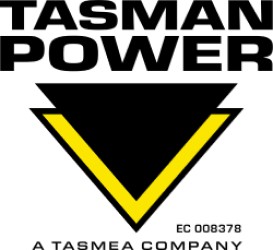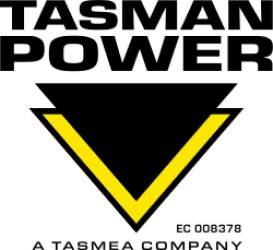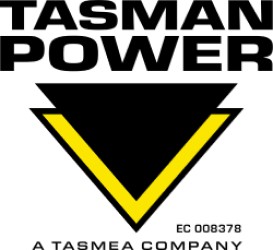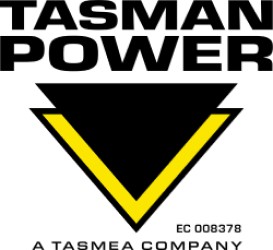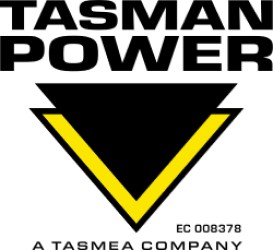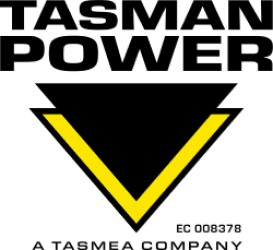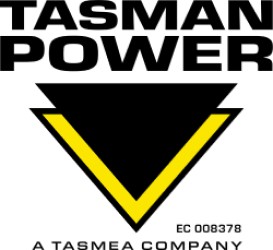Title Page
-
Site conducted
-
Date and Time
-
Task
-
Conducted on
-
Work Location
-
Prepared by
Untitled Page
Guards, Barriers and Barricades
-
1. Are all line of fire zones identified and clear of personnel?
-
2. Is the work area and equipment demarcated and barricaded to prevent unauthorised access?
-
3. Is equipment guarding, barriers and barricading appropriate, in place and secure?<br>
-
4. Is the location of emergency stops, pull wires and dead man switches known and easily accessible?
-
5. Are emergency stops, pull wires and dead man switches operational?
-
6. Where guards, barriers and barricades have been removed, does the work plan include their installment?
High Pressure Equipment Management
-
7. Has the team confirmed there is no alternative work method to eliminate use of high-pressure equipment?<br>
-
8. Is there a requirement for the equipment to be used by a single operator?
-
9. Is the equipment appropriate for the task?
-
10. Is the high pressure equipment safe for use? E.g. maintained and inspected.
-
11. Has a person been designated as the safety observer?
-
12. Is the pressure being applied within the operating limits of the equipment?
-
13. Does the team have the correct PPE for the task?
Isolation and Verification of Zero Energy
-
14. Is an approved isolation procedure being followed?
-
15. Are all personal locks on the correct isolation point?
-
16. For unisolated work (including testing and fault finding), is an approved procedure being followed?
-
17. Have all energy sources been identified, isolated and checked for zero energy? E.g. process flows, mechanical, stored, residual, hydraulic, pneumatic, chemical, electrical.<br>
Mechanical Integrity of Equipment
-
18. Are controls in place to stop high volume hoses/piping from uncontrolled movement? E.g. whip checks/lines, stop flow valves, safety clips.
-
19. Have piping, hoses and equipment been inspected to confirm their mechanical integrity and safe condition? E.g. walk the line, bolts, flanges, couplings<br>
-
20. Are piping, hoses and equipment under pressure correctly rated for the task?
-
21. Is the measurement device (e.g. pressure gauge, load cells etc) used to confirm the pressure calibrated and in good working condition? e.g. upper and lower operating limits clearly displayed.
Relief Valves
-
22. Have relief valves been inspected? E.g. check for safe and clear vent direction, integrity seal/tag
-
23. Is the vessel pressure gauge indicating safe operating range?
Tensioned Lines Management
-
24. Is an approved tension lines procedure being followed?
-
25. Has the equipment to be tensioned (e.g. snatch blocks, counterweight cables, come alongs) been inspected for items such as rating and mechanical integrity?
Tire Management
-
26. Is the inflation/deflation tool calibrated and in good working condition?
-
27. Prior to removal, installation or strip down, is the tire deflated to the correct pressure?<br>
-
28. Has the wheel assembly integrity been verified? I.e. confirming no physical damage (cracks and deformities) on the tire and rim.
-
29. Are approved safety barriers in place prior to tire inflation? e.g. inflation/protection cage, remote inflation line, exclusion zones.<br>
-
30. During tire inflation, are all line of fire zones identified and clear of personnel?
PHA - Prevention of Pipeline Full Bore Rupture and Jet Flame
-
31. Earthing Grid: Has a 2 year Earthing & Bonding System test been performed and that resistance is less than 0.5Ω.?
-
32. Earthing Grid: Has all the earthing and bonding locations on the pipeline been visually inspected and there is no evidence of damage or faults? Any visual damage to the earthing and bonding system are to be repaired or referred for further assessment via an Engineering Service Request (ESR)
-
33. Cathodic Protection: Has a detailed annual survey performed on the impressed current system to verify the current output of the CP system?
-
34. Cathodic Protection: Has the detailed survey report recorded any anomalies in the current output during operation or during current capacity testing of the current supply?<br>Note: Any indication of anomalies is to be referred to engineers for further<br>assessment<br>
-
35. Cathodic Protection: Has the annual resistance test for monolithic insulated joints and flanges indicated a resistance of greater than 1 M (Mega)ohms?
-
36. Cathodic Protection: Has an annual resistance and potential test been performed on the resistance probe open circuit and probe current?
-
37. Cathodic Protection: Do all test points show potential with CP ON and CP<br>OFF within range? Minimum protective potential of –850mV CP OFF with respect to a copper/copper sulphate reference electrode in accordance with AS 2832.1. Maximum protective potential of –1200mV CP OFF with respect to copper/copper sulphate reference electrode in accordance with AS 2832.1
-
38. Cathodic Protection: Has the resistance probe corrosion assessment showed less than 5 microns per year?
-
39. Cathodic Protection: Has a check been performed to ensure no damage, lose connections, and degradation to resistance and potential test points?
-
40. Cathodic Protection: Has a monthly measurement performed on the potential test points with CP ON for maximum standing voltage of 4V AC?
-
41. Cathodic Protection: Has an annual field measurement and calibration test performed on the reference electrodes?<br>
-
42. Cathodic Protection: Has an annual measurement of circuit loop resistance been performed on the transformer rectifier unit?
-
43. Cathodic Protection: Has the annual report shown the output voltage and current displayed accurately at the transformer rectifier unit?
-
44. Cathodic Protection: Has the monthly report shown the output voltage and current at the transformer rectifier unit?<br>
-
45. Cathodic Protection: Confirm no active alarms at the SCADA system?
-
46. PRV: Has a post installation inspection performed after 1 year of installation?
-
47. PRV: Has a 2 yearly in service external inspection performed on the PRV without any leaks and signs of damage?<br>
-
48. PRV: Has the PRV been removed, tested and calibrated every 4 years or replaced in lieu of testing and calibration?
-
49. Phyrophoric Dust Handling: Has a risk assessment been conducted prior to pigging and filter element changeout?
-
50. Phyrophoric Dust Handling: Has an annual audit been conducted on the Safe Work Management System procedure in accordance with AS/NZS 60079.10. 1:2009?<br>
-
51. Phyrophoric Dust Handling: Have all the personnel conducting pigging and coalesce filter changeout is trained and competent to perform the task?
-
52. Phyrophoric Dust Handling: Is the area prepared prior to pigging operations and coalesce filter changeout in accordance with the work instruction? This must include:<br>1. Class A fire extinguishers<br>2. Catchment tray and bags<br>3. Clear of flammable material or debris
-
53. Phyrophoric Dust Handling: Has the pyrophoric waste safely disposed off site under Global Classification and labelling standards GH7?
-
54. Surge Diverters: Has the annual inspection and test been conducted on the surge diverter?
-
55. Surge Diverters: Is the surge diverter tested with a multimeter capable of supplying both AC and DC voltage at 2.2V to record the following: 1. AC passing (>1 mA) and DC blocked
-
56. If there is significantly overdue maintenance, is there an ATO? (Answer yes if there is no overdue maintenance. Where maintenance is overdue identify which equipment it is in the comments)
PHA - Prevention of Rupture of Pressure Vessel
-
57. Basic Process Control System : Is the vessel plate accessible and legible?<br>
-
58. Basic Process Control System: Has the compressor been serviced in accordance with OEM requirements (check service sheet)?
-
59. Basic Process Control System: Are the PMO1's taking place on time and subsequent notifications are followed and actioned?
-
60. Basic Process Control System: Are service records accessible for review for the compressor?
-
61. Basic Process Control System: Is there an independent pressure gauge which is visibly displayed at the pressure vessel?
-
62. Basic Process Control System: Has the pressure gauge been calibrated according to the manufacturer's specification and currently certified?<br>
-
63. Basic Process Control System: Is the pressure less than the maximum allowable operating pressure specified on the name plate of the vessel?<br>
-
64. Basic Process Control System: Has signage been visibly displayed at the location of the pressure vessel to restrict the attachment of unauthorised external pressure source/s?
-
65. Earthing: Does an earthing system exist for the pressure vessel (e.g. spikes, pit, connection to other structure/s, etc.)?<br>
-
66. Earthing: Are the earthing circuits (connections and cables from ground to the vessel) and lightning rods in good condition (no corrosion, attachments are secure, etc.)?
-
67. Earthing: Is the resistance test within date?
-
68. Earthing: Does the resistance test result show less than 10 ohms?
-
69. Earthing: Are the tactics for earthing mat has been executed as scheduled?
-
70. Impact Barriers: Is there suitable protection from the threat of impact?
-
71. Impact Barriers: Are the impact barriers in good condition (e.g. free from corrosion, warping or other defects)?
-
72. Impact Barriers: Is there no evidence of previous impact?
-
73. Impact Barriers: Are all the credible collision paths protected?
-
74. Pressure Relief PSV: Does the PSV serial number match the data certificate?
-
75. Pressure Relief PSV: Is the PSV within calibration date?
-
76. Pressure Relief PSV: Is the PSV in good condition (e.g. no fouling) and tamper proof seal has not been broken?<br>
-
77. Pressure Relief PSV: Is the PSV set point less than the design pressure of the vessel?
-
78. Pressure Relief PSV: Are the PMO1's for PSV taking place on time and subsequent notifications are followed and actioned?
-
79. Pressure Vessel Integrity Shell: Is there no evidence of recent damage to the vessel shell?
-
80. Pressure Vessel Integrity Shell: Is there an internal inspection report for,<br>- LPG vessels no older than 10 yrs?<br>- Accumulators no older than 12 yrs?<br>- All other vessels no older than 4 yrs?
-
81. Pressure Vessel Integrity Shell: Is there an external inspection report no older than 2 years?
-
82. Pressure Vessel Integrity Shell: Are there no concerns from the previous inspection reports?
-
83. Pressure Vessel Integrity - Structure/ Foundation : Is there no evidence of erosion, settling, subsidence, water seepage, pooling or structure/foundation damage?
-
84. Pressure Vessel Integrity - Structure/ Foundation: Does it appear that the structure/foundation is in good condition?<br>- concrete surface is free of cracks, exposed steel or rust stains - steelwork is free of distortion, excessive deflection, corrosion or cracking<br>-the bolts are tight<br>-the bolts are free of distortion or corrosion<br>
-
85. Location: Is the site clean and tidy with no combustible or flammable materials stored nearby?
-
86. Location: Is the site free of abnormal equipment or activities within 10m of the vessel (e.g. laydown area, temporary offices etc.)?
-
87. Location: During the cyclone season, has the area surrounding pressure vessel been inspected, cleared and all loose objects with potential to become flying debris secured?
-
88. Location: Is the area surrounding pressure vessel clear from combustible materials and kindling which could escalate or provide a travel path for bushfires?
-
89. Operating/Fillign Procedures: Is there a controlled copy of SWP available?
-
90. Opperating/Filling Procedures: Has the SWP been followed?
-
91. Emergency Response Plan (LPG vessels only): Is there an ERP in place and is current?
-
92. Emergency Response Plan (LPG vessels only) :Does the ERP include instructions on the response to an LPG incident such as gas leak, jet fire, explosion and BLEVE?
-
93. If there is significantly overdue maintenance, is there an ATO? (Answer yes if there is no overdue maintenance. Where maintenance is overdue identify which equipment it is in the comments)
